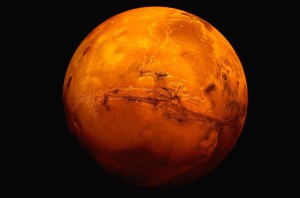Below you will find a beautiful timelapse of the Mojave Desert, shot and edited by astrophotographer Harun Mehmedinovic, that managed to capture a meteorite explosion.
MOJAVE BLUES from Harun Mehmedinovic on Vimeo.
The Research of Dr. Ivana De Domenico
Below you will find a beautiful timelapse of the Mojave Desert, shot and edited by astrophotographer Harun Mehmedinovic, that managed to capture a meteorite explosion.
MOJAVE BLUES from Harun Mehmedinovic on Vimeo.
Researchers, scientists, and engineers from around the world are continuing to push the limits of what is possible. What these people are discovering have the potential to improve our lives in incredible ways. I have compiled three different stories that are each promising in their own right.
Here are three research stories that you should be aware of today:
Bionic Spinal Cord
Researchers in Australia have created a “bionic spinal cord” that they claim would give paralyzed people significant hope of walking again. What makes the device even more amazing is that it could actually be utilized through the power of thought, without the need for open brain surgery.
The researchers proof-of-concept results come from a study conducted on sheep, demonstrating high fidelity measurements taken from the region of the brain responsible for controlling voluntary movement with the use of the device.
Vertically Launching Electric Plane
Elon Musk has been a technology pioneer. Helping to build companies such as PayPal, Tesla, and SpaceX. Each of these companies has revolutionized (or are in the process of revolutionizing) their respective industries. Now, Musk has his sights on building an electric-powered plane.
During a Q&A session for the Hyperloop Pod ceremony, Musk was asked to tell the audience what his next big idea was. Musk’s response: “Well I have been thinking about the vertical takeoff and landing electric jet a bit more. I mean, I think I have something that might close. I’m quite tempted to do something about it.”
Can Our Minds Live Forever?
Scientists are looking to preserve a brain, along with all of its thoughts, memories, feelings and everything else that makes us who we are, even after we have passed. To accomplish “life beyond life,” they are looking to preserve a brain’s connectome. While they are still unsure about whether this is possible, the scientists are developing techniques that they believe will answer this question.
Kenneth Hayworth, a neuroscientist and the brainchild behind the Brain Preservation Technology Prize, believes that this technology will be possible. During an interview with Scientific America, Hayworth stated that he is “virtually certain that mind uploading is possible. Our best neuroscience models say that all these perceptual and sensorimotor memories are stored as static changes in the synapses between neurons.” This is exactly what the technique is designed to preserve.

NASA and the world news has been buzzing since researchers discovered the best evidence yet that Mars does indeed have water on it. As the most similar to Earth of all the planets, it has many wondering: could life on Mars be a viable option?
As fresh and clean water becomes less and less available on earth (and extracting salt from water is still expensive), finding other sources of the most necessary ingredient to life is growing in importance.
With the knowledge of dried up riverbed and sedimentary rock formations, we were aware for a while of Mars’ watery past (most likely over a billion years ago), but it was assumed that it was in the past. Signs of erosion were examined, which helped determine that at one time Mars had oceans along its surface going over a mile deep. But this water source was depleted as the planet lost its protective magnetic field from strong solar wind.
Now equipped with imagery of the water formations along the mountains of Mars, it would seem possible to make it a harvestable place to grow vegetation for consuming, but there is a problem. The water is poisonous. It’s filled with perchlorates, which are lethal to humans, but the water can be treated and processed into drinking water. Since the discovery, researchers are wondering if there is a water spring or gusher still waiting to be found. With more knowledge, the possibilities could be endless.
This is just the beginning in learning how exactly humans can use Mars to solves some of her problems. According to Buzz Aldrin, who was the pilot of the first manned mission to the moon, this is another small step for mankind just like those first steps on the moon. He believes that, “no dream is too high for those with their eyes in the sky!”
Info courtesy of Forbes and Time.
Scientists have recently discovered the smallest supermassive blackhole to date. Using NASA’s Chandra X-ray Observatory, astronomers were able to spot the blackhole lurking in the centre of a dwarf galaxy.

Located around 340 million light-years away from us, this blackhole is 50,000 times the mass of the sun. While this may sound large, when compared to the previous smallest object of its kind, this blackhole is actually two times smaller.
Supermassive blackholes are thought to form and evolve with the host galaxies whose centres they inhabit. Every large galaxy is believed to have a supermassive blackhole at its centre. This discovery, however, is the first supermassive blackhole found to be identified in a dwarf galaxy.
“By studying how galaxies like this one are growing and feeding their black holes and how the two are influencing each other, we could gain a better understanding of how galaxies were forming in the early universe,” said Vivienne Baldassare, a U-M doctoral student . “The black hole we found is active and based on the X-ray observations, it appears to be is consuming material at a rate similar to active black holes in much more massive galaxies.”
To learn more about this discovery and what it means for astronomers and researchers alike, check out this article.
NASA’s Mars Opportunity rover has been on Mars for 11 years and has covered a large distance during this time. 26.2 miles in fact, the distance of a marathon. The rover has captured amazing images and has allowed us to learn a great deal about the planet. To commemorate the event of Mars Opportunity rover completing a ‘marathon’ NASA has released a video that allows you to watch the entire journey it has taken throughout its mission to mars. It is a great video that gives you a amazing perspective of the planet. I highly recommend you take the time to check it out. Enjoy your trip to Mars!
 A huge black hole has re-awakened after 26 years of being dormant. The black hole is located about 7,800 light-years from Earth and is described by the European Space Agency as part of V404 Cygni, a binary system made of up the hole and a star. The last time activity was dedicated from V404 was back in 1989, but on June 15th NASA’s Swift satellite detected new bursts of gamma rays.
A huge black hole has re-awakened after 26 years of being dormant. The black hole is located about 7,800 light-years from Earth and is described by the European Space Agency as part of V404 Cygni, a binary system made of up the hole and a star. The last time activity was dedicated from V404 was back in 1989, but on June 15th NASA’s Swift satellite detected new bursts of gamma rays.
You can read more about this story here.
 NASA is planning to send a group of astronauts to Mars by the mid – to late 2030s. Now they must begin to decide where its first astronauts should make their landing on the Red Planet. This October in Houston, NASA will be holding a workshop where they will discuss possible landing sites for this expedition.
NASA is planning to send a group of astronauts to Mars by the mid – to late 2030s. Now they must begin to decide where its first astronauts should make their landing on the Red Planet. This October in Houston, NASA will be holding a workshop where they will discuss possible landing sites for this expedition.
You can read more about this story here.
For years, scientists believed the stratosphere to be an atmospheric feature unique to planets within our own solar system. But in an recent journal entry, scientists reveal this isn’t exactly the case.
In case you don’t know, the stratosphere is a layer of the atmosphere (including our own on earth!) that is distinguished by two main characteristics. First, is temperature inversion. Simply put, the higher up you go in the stratosphere, the hotter it gets. This is opposed to layers like the troposphere, in which temperatures decrease with altitude (which is partially why your plane rides are a bit chilly). Secondly, the stratosphere contains particles which help absorb the sun’s rays. On Earth, we have the Ozone. On other planets, there are molecules called hydrocarbons. Until now, it was believed that exoplanets were just too hot to facilitate the presence of such son absorbing molecules. But WASP-33b, the exoplanet in question, apparently does have an atmospheric layer characterized by a temperature inversion– and scientists believe it to be caused by titanium oxide. In other words, it looks like there very well may be stratospheres in other star systems.
Read the NASA Press Release
Neil deGrasse Tyson has represented the more approachable mainstream discourse in astrophysics and cosmological philosophy for quite some time, establishing himself as a well trusted figurehead of these two disciplines. Involved in the fields for more than thirty years, he gained significant fame from a number of television shows and podcasts, and saw an increased following after his 2014 adaptation of Carl Sagan’s Cosmos. Also an activist for social justice and race equality, Tyson is best known for his accessible interpretations and his ability to spark wonder about some of the more esoteric and thus forgotten realms of science. Examples include stellar evolution and the interconnectivity of humans with their universe. His 2012 youtube webisode show secured him a spot on National Geographic that will open late-night ears to his insight and change the way crucial scientific theories are received.
Neil DeGrasse Tyson’s personality alone attracts and inspires those who may not consider themselves well versed in the fields of science. His personal version of spirituality rings familiar as one that many can identify with: “For me, when I say spiritual, I’m referring to a feeling you would have that connects you to the universe in a way that it may defy vocabulary…the moment you learn something that touches an emotion rather than just something intellectual, I would call that a spiritual encounter with the universe.” His powerful belief in the interconnectivity of humanity with the universe sees beyond the temporal and transcends preconceived and existing notions of self and separation. This helps to progressively dissolve practical constructs like race and the social hierarchy while bringing people together under much grander philosophical discourse. Put simply, he brings people together with a fascination that never seemed so easy to possess.
There are few hosts as enthusiastic and entirely dedicated to his practice as Neil deGrasse Tyson is to the revisualization of the universe and all its mysteries. His show will discuss topics relevant to today’s concerns like space travel, extraterrestrial life, and the enigma of black holes. He reimagines, rephrases, and dissects the greatest wonders in topics that on first glance seem exclusive. But Tyson is nothing but excited to reach the masses on a series of questions he knows will incite inspiring debates and conversations that were never before so commonplace. “Star Talk”, which will invite everyone from erudite scholars to adored pop culture icons, will be the perfect merger of inaccessible scientific theories and casual late-night entertainment. It will give a relaxed approach to a number of puzzling mysteries, and will feature many celebrities giving their own perspectives on the issues.